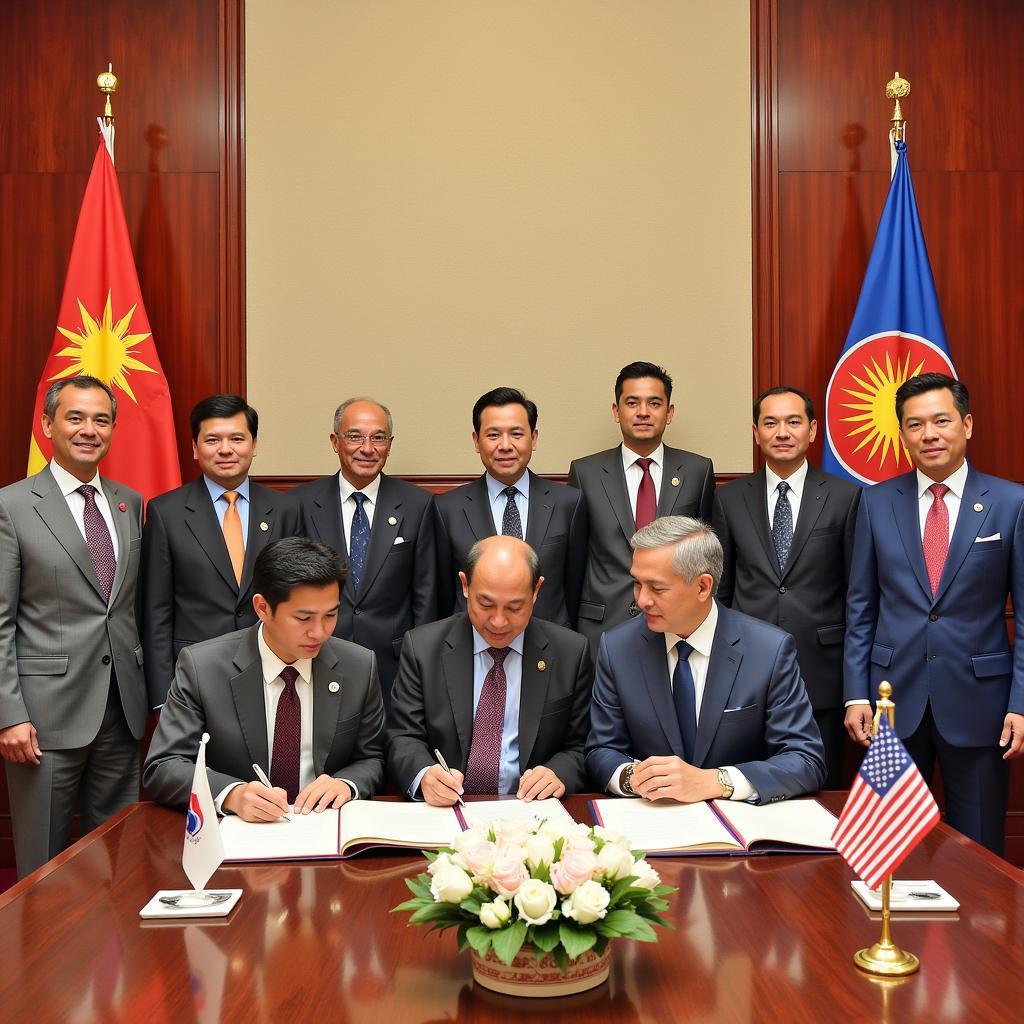ASEAN and the principle of non-intervention are intertwined concepts shaping the region’s political landscape. This principle, enshrined in the Treaty of Amity and Cooperation (TAC), has been a cornerstone of ASEAN’s approach to regional affairs, influencing conflict resolution and inter-state relations. This article will explore the practice and prospects of non-intervention within ASEAN, examining its challenges and opportunities in a changing geopolitical environment.
Understanding Non-Intervention in the ASEAN Context
The principle of non-intervention essentially calls for member states to refrain from interfering in the internal affairs of other ASEAN countries. It emphasizes respect for sovereignty, territorial integrity, and the right of each nation to chart its own course without external pressure. This principle has been instrumental in fostering a climate of peace and stability in a region historically marked by diversity and potential conflict.
The Treaty of Amity and Cooperation: A Foundation for Non-Intervention
The TAC, signed in 1976, serves as the legal framework for non-intervention within ASEAN. It outlines the fundamental principles governing relations between member states, including the commitment to peaceful settlement of disputes and the renunciation of the threat or use of force. The TAC’s emphasis on non-intervention has helped to prevent escalation of tensions and promote dialogue as the preferred mode of interaction.
 ASEAN Treaty of Amity and Cooperation Signing Ceremony
ASEAN Treaty of Amity and Cooperation Signing Ceremony
Challenges to Non-Intervention in ASEAN
Despite its significance, the principle of non-intervention faces several challenges in practice. The diverse political systems and varying levels of development within ASEAN create a complex environment where the boundaries of non-intervention can be blurred. Issues like cross-border crime, human rights concerns, and environmental challenges often necessitate cooperation that can be perceived as intervention.
Navigating the Grey Areas: Non-Intervention in Practice
The practical application of non-intervention in ASEAN is not always straightforward. There are instances where member states have grappled with balancing the principle of non-intervention with the need to address regional issues that have implications beyond national borders.
Balancing Sovereignty and Regional Cooperation
The inherent tension between sovereignty and regional cooperation presents a constant challenge. While non-intervention respects national sovereignty, some regional issues require collective action. Finding the right balance requires careful diplomacy and a nuanced understanding of the specific context.
Evolving Interpretations of Non-Intervention
The interpretation of non-intervention has evolved over time. While the core principle remains, there is increasing recognition that certain issues, such as humanitarian crises or transboundary environmental problems, require a more flexible approach. This evolution reflects the changing dynamics of the region and the growing interconnectedness of its member states.
The Future of Non-Intervention in ASEAN
The future of non-intervention in ASEAN is closely linked to the evolving geopolitical landscape. The rise of new powers, changing regional dynamics, and emerging global challenges will continue to test the principle and its practical application.
Non-Intervention in a Multipolar World
In a multipolar world, ASEAN’s commitment to non-intervention will be increasingly important. As external powers engage with the region, ASEAN’s adherence to this principle can help to maintain its centrality and prevent the region from becoming a battleground for competing interests.
Strengthening ASEAN’s Mechanisms for Conflict Resolution
To enhance the effectiveness of non-intervention, ASEAN needs to strengthen its mechanisms for conflict resolution. This includes improving existing platforms for dialogue, developing more robust mechanisms for mediation and arbitration, and fostering a culture of preventive diplomacy.
Conclusion
ASEAN and the principle of non-intervention are integral to the region’s peace and stability. While navigating the complexities of a changing world, ASEAN’s commitment to non-intervention will continue to shape its interactions and its role in the international arena. Maintaining a balance between respecting sovereignty and fostering regional cooperation will be crucial for the future of ASEAN and its ability to address the challenges and opportunities of a dynamic global landscape.
FAQ
- What is the Treaty of Amity and Cooperation (TAC)?
- How does the principle of non-intervention apply to human rights issues within ASEAN?
- What are the main challenges to upholding non-intervention in the region?
- How has the interpretation of non-intervention evolved over time?
- What role does non-intervention play in ASEAN’s relations with external powers?
- How can ASEAN strengthen its mechanisms for conflict resolution?
- What is the future of non-intervention in a multipolar world?
Need support? Contact us 24/7: Phone: 0369020373, Email: [email protected] or visit us at Ngoc Lien Village, Hiep Hoa, Bac Giang, Vietnam.